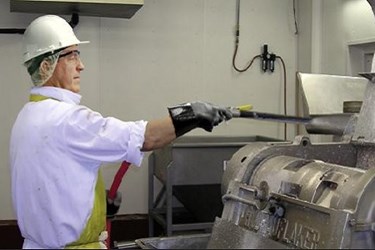7 Must-Haves In Your Sanitation SOP
By Laurel Maloy, contributing writer, Food Online

Every facility, though not necessarily required to comply with FSMA must, regardless, have in place a Sanitation Standard Operating Procedure. This should be a well-rounded and adequately-documented procedure including the means with which to monitor and measure its successes and failures. Nothing less will be acceptable with the authority granted to the FDA and the Food Safety Inspection Service.
First and foremost, it is essential that you document everything. If you have to hire a person just to take care of the paperwork, do it. No longer will sticky notes, dog-eared notebooks, word-of-mouth, or incomplete records be acceptable. Every facility will be required to have a formal, comprehensive, written plan for the sanitary operations of its plant. At a minimum, your Sanitation Standard Operating Procedure (SSOP) and/or Hazard Analysis and Critical Control Points (HACCP) process must cover:
- Pest Control — Pests must be excluded from the processing plant. Your company’s written plan must include all measures completed to ensure a pest-free environment. Include such information as the type of traps used, where they are located, a schedule for monitoring and replacement, and who is responsible for the task. If you’ve sealed holes, repaired walls, or put in a new drainage system to deal with the problem, document it. Also include any plans for pest control in the future.
- Proper Storage And Labeling Of Chemicals — This includes anything and everything utilized for cleaning, pest control, machine maintenance, and employee health. Store according to the directions on the packaging and separate as necessary per hazardous material specifications. If you are mixing cleaning compounds into smaller containers for use, be sure that every container is clearly labeled and stored in its proper place. No exceptions.
- Food, Packaging, And Food Contact Surfaces — All of these things must be protected from adulteration with all biological, chemical, and physical contaminants. This includes machine lubricants, cleaning compounds, pesticides, and sanitizing agents. Additionally, cross-contamination of gloves, utensils, protection garments, and any other possible avenues of cross-contamination must be considered and addressed. Be sure to include processes that prevent cross-contamination from raw product to cooked.
- Facility Condition And Cleanliness — This should go without saying and is self-explanatory. The condition and the cleanliness of the facility and its processing equipment must be maintained so as to prevent adulteration of food products. To put it in perspective — if you would hesitate to eat the food coming out of your company’s facility your company should upgrade and/or clean up. Document machine and facility maintenance as well as cleaning schedules and procedures. Always include the responsible parties’ names and contact information.
- Water Use And Safety — All water that comes into contact with food or food contact surfaces must be clean and pathogen free. Include in your SSOP the procedures by which your company tests and monitors the water used within the facility. Don’t forget to consider the water in employee restrooms, break rooms, and hand washing stations. Standing water of any kind is a no-no and will be dealt with by regulating authorities if you don’t do so yourself.
- Sanitization Maintenance — This involves hand washing stations, toilet facilities, and hand sanitizing stations. Outer garments, hair nets, gloves, booties, and goggles must be laundered, replaced, sanitized, or changed as often as necessary to prevent insanitary conditions, cross-contamination, or adulteration. Also include a plan for safe storage and disposal of these items.
- Employee Health Monitoring — Ill or otherwise unhealthy employees can directly cause the microbiological contamination of food, food contact surfaces, and packaging material. Encourage employees to report illness and to take the necessary steps to prevent it from spreading. Regular health tests, such as those for TB and Hepatitis, must be performed on a schedule for each employee, and must be well-documented. The dates of testing, the negative or positive results, and all other appropriate information should be included in your documentation. It may be prudent to train management or shift supervisors to watch for signs of infection in order to preclude the spread of a communicable disease.
All aspects above will contribute to the ultimate safety of the food produced in your company’s facility. As a bonus, the better documented the SSOP, the more favorably your company will be viewed by the regulatory agencies. This is just a guideline, as each facility has its own factors to evaluate. However, while concentrating on the above components, watch for other opportunities for improvement in your facility and its SSOP. It will be time well spent.
